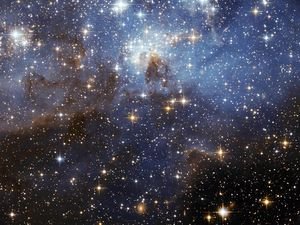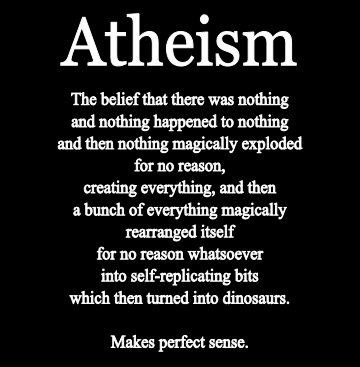Cosmology: Difference between revisions
(→Links) |
|||
| Line 9: | Line 9: | ||
There can be no real disagreement between the truths known from science and the truths known from revelation because the very same God is the source of the universe, our reasoning powers, and revelation. ''Apparent'' differences stem from misunderstandings of reason or revelation. | There can be no real disagreement between the truths known from science and the truths known from revelation because the very same God is the source of the universe, our reasoning powers, and revelation. ''Apparent'' differences stem from misunderstandings of reason or revelation. | ||
=== Visible and Invisible === | |||
In the [[Nicene Creed]], "visible" really means "what is capable of being observed through our senses or by reasoning based on the senses. The word "visible," in and of itself, deals only with the sense of sight, but it should not be taken to exclude what is known through hearing, tasting, touching, and smelling. | |||
The '''natural sciences''' deal with "visible" (sensible) created reality. The empirical methods of objective observation and decisive experimentation are the best methods for knowing the physical world, which consists of forms of matter and energy that are found in space and time. | |||
"Invisible" realities are '''metaphysical,''' from the Greek roots that mean "beyond" (''meta'') and "physics" (''physis''). Here, too, the reference to one sense includes all possible knowledge through the other senses. The "invisible" dimension of creation is beyond the realm of the physical universe and therefore beyond the scope of the natural sciences. We cannot see, hear, taste, touch, or smell metaphysical realities like God, angels, the souls of the dead, universal truths, and the like. Metaphysical realities cannot be observed empirically nor can we construct experiments by which to prove metaphysical realities to skeptics. | |||
== Natural theology == | == Natural theology == | ||
Revision as of 13:03, 23 March 2014

Theological understanding of all that is
The God of Abraham, Isaac, and Jacob, God the Father, the God of our Lord Jesus Christ, is the maker of "the heavens and earth, all that is visible and invisible."
One God created everything that is created. If there are other rational animals on other planets, God created them. If there are many universes, God created them.
Science studies what God created.
There can be no real disagreement between the truths known from science and the truths known from revelation because the very same God is the source of the universe, our reasoning powers, and revelation. Apparent differences stem from misunderstandings of reason or revelation.
Visible and Invisible
In the Nicene Creed, "visible" really means "what is capable of being observed through our senses or by reasoning based on the senses. The word "visible," in and of itself, deals only with the sense of sight, but it should not be taken to exclude what is known through hearing, tasting, touching, and smelling.
The natural sciences deal with "visible" (sensible) created reality. The empirical methods of objective observation and decisive experimentation are the best methods for knowing the physical world, which consists of forms of matter and energy that are found in space and time.
"Invisible" realities are metaphysical, from the Greek roots that mean "beyond" (meta) and "physics" (physis). Here, too, the reference to one sense includes all possible knowledge through the other senses. The "invisible" dimension of creation is beyond the realm of the physical universe and therefore beyond the scope of the natural sciences. We cannot see, hear, taste, touch, or smell metaphysical realities like God, angels, the souls of the dead, universal truths, and the like. Metaphysical realities cannot be observed empirically nor can we construct experiments by which to prove metaphysical realities to skeptics.
Natural theology
Natural theology is a branch of metaphysics, which in turn is a branch of philosophy.
The Church uses Aristotelian realism as refined by Thomas Aquinas to guide its thinking about thinking and to shape is understanding of everything that can be thought.
Rom I & V I
We can recognize that there is one infinite, all-present, all-powerful, all-good, all-knowing being that is the cause of the existence and qualities of everything in the universe.
The Big Bang
Physics studies space-time and matter-energy.
Astrophysicists argue that the Big Bang theory is the best explanation for what we observe in the universe today:
- All space-time and matter-energy in the universe were once in a particle smaller than the diameter of an atom.
- That Cosmic Egg, singularity, or God-particle inflated to the size of a grapefruit in virtually no time.
- For three hundred thousand years, the universe was a continually-expanding, hot, dark plasma. There was no room for even the shortest wavelength of light to travel from one form of matter to another.
- When the universe had expanded and cooled sufficiently for particles to form from the plasma, there was a great flash of light that is still observable in the microwave spectrum of light. This light is everywhere in the universe, but it is fading. A billion years from now, scientists will not be able to observe it. They will have to take the word of previous generations of scientists about it.
- The first stars formed by the force of gravity out of hydrogen, helium, and lithium.
- Those stars fused hydrogen, helium, and lithium into all of the elements of the periodic table.
- Second generation stars formed out of the heavy elements.
- Planets formed around those stars from the same clouds of stardust.
- The expansion of the universe will probably continue, it seems, until it reaches thermodynamic equilibrium ("heat death") on the small scale and unbounded isolation between galaxies.
Theories of Evolution
- A Catholic View of Evolution--St.John Paul the Great said that evolution is "more than a theory."
Philosophies of Science
Theistic
Atheistic

References